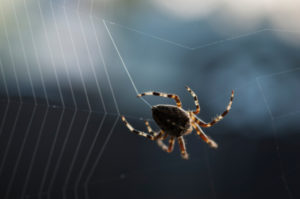When faced with a design challenges, we ask a lot of questions. “What defines this place? What is its history, and how is it projected to change? What vegetation and microclimates exist here? What people, plants and wildlife can use this site?” These questions are important to the process, as they help us explore potential, but what if we began by first asking, “What would nature do?” If were to start by following the guidelines nature has used for more than 3.8 billion years, might we discover new, better, more sustainable solutions?
Janine Benyus says yes. With the 1997 publication of her book, Biomimicry: Innovation Inspired by Nature, this biologist helped launch the fascinating and rapidly developing practice of Biomimicry.
What exactly is biomimicry? Simply put, it’s the practice of emulating nature’s genius. Unlike bio-inspired design, which turns to nature for inspiration (think Velcro, created by Swiss engineer George de Mestral after he removed burrs from his dog and examined how they worked), biomimicry looks to nature as teacher – not only to guide form and process, but also sustainability.
Biomimicry also integrates an intention to reconnect people to the natural world an ethos that humans are but one part of life on Earth that must “fit in.” The organization Janine co-founded, now known as Biomimicry 3.8, connects and instructs biologists, engineers, designers, business people, and other innovators from all over the world who seek nature as a model for innovative strategies, a mentor for aspiration, and a standard for measuring sustainability. We had a chance to talk with Janine and learn more about how we can apply “life’s instruction manual” to our work.
Applications of biomimicry extend far beyond industrial design to architecture, medicine, finance, transportation, and landscape design. It can even apply to the way we structure, lead, and manage our businesses and organizations, as we learn from facilitator, trainer, and leadership expert Toby Herzlich.
Can biomimicry be applied to ecological restoration, conservation planning, and regenerative design? You bet it can. We talked about this with biologist, Certified Biomimicry Professional, and founder of the firm Symbiosis, Taryn Mead.
 Is ecological engineering the same thing as biomimicry? Not really, but the two disciplines are closely related, as senior environmental scientist Peter May explains in his article Biomimicry and Ecological Engineering.
Is ecological engineering the same thing as biomimicry? Not really, but the two disciplines are closely related, as senior environmental scientist Peter May explains in his article Biomimicry and Ecological Engineering.
We also provide resources for those of you who want to learn more about biomimicry, and we share the latest about what we’ve been up to at Biohabitats.
What if we turned to nature for both inspiration and guidance? Join us as we begin to find out ! As always, let us know what you think.
Further Reading
Meet Water Resources Engineer Kayla BrownNew Mexico Must Become a Catcher of Rain
Ripple Effects
Get to know Water Resources Engineer Jake Radeff
Meet Conservation Biologist Nolan Schillerstrom
More From This Author
Biohabitats receives ASLA’s highest honorThoughts on GIS
Thoughts on Earth Day
Thoughts on Reintegrating Urban Ecology
COVID-19 Alert: Nature is not cancelled.

